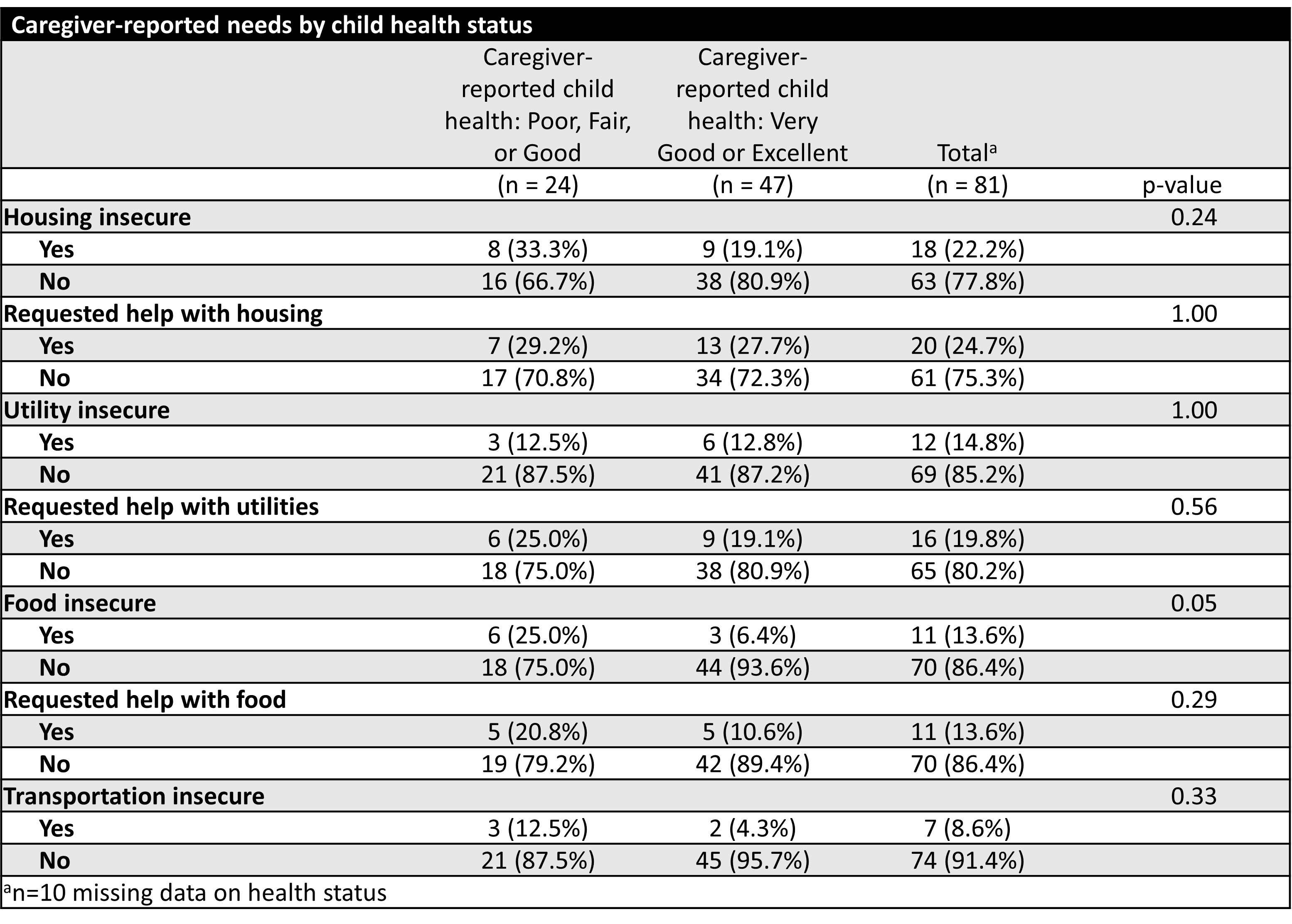Health Equity/Social Determinants of Health
Health Equity/Social Determinants of Health 6
658 - Health-Related Social Needs Among Children with Medical Complexity in a Large Primary Care Clinic
Publication Number: 658.317
.jpg)
Hadley S. Smith, PhD, MPSA (she/her/hers)
Assistant Professor
Harvard Medical School & Harvard Pilgrim Health Care Institute
Brookline, Massachusetts, United States
Presenting Author(s)
Background: Families of children with medical complexity face numerous health-related social needs (HRSN). As payers and regulators increasingly require HRSN screening and response, health care organizations must understand families’ needs and what is required to address them.
Objective: Understand HRSN among a diverse sample of medically complex patients receiving primary care at one large tertiary hospital with established social needs screening and response.
Design/Methods: We retrospectively reviewed electronic health records (EHRs) of a randomly selected sample of medically complex patients (severe single or multisystem illness) with a well child visit 11/2021-11/2022. We extracted responses to a HRSN screening questionnaire administered to caregivers at the visit, which included items to assess the child’s general health and the family’s need and desire for help with housing, utilities, food, and transportation. We reviewed notes from physicians and social workers and recorded whether HRSN were documented or addressed during the index visit or any encounter during the study period, respectively. We calculated descriptive statistics on needs and tested for associations with child’s age and health status using Fisher’s exact tests.
Results:
Our analysis included 140 patients (age range: 0-21 years). Most patients were non-Hispanic Black (35.7%) or Hispanic (31.4%) and most caregivers spoke English (65.7%) or Spanish (18.6%); 30% required an interpreter. HRSN screen results were available in the EHR for 57.9% (n=81) of patients, and the physician acknowledged the screen in 61.4% (n=86) of notes. Screen responses indicated housing insecurity (22.2%) and requests for help with housing (24.7%), utility insecurity (14.8%) and requests for help with utilities (19.8%), food insecurity (13.6%) and requests for help with food (13.6%), and transportation insecurity (8.6%). Child age was associated with housing insecurity, with 36.4% of caregivers of children under 2 reporting insecure housing (p=0.002). Food insecurity was reported by 25% of caregivers of children with poor, fair, or good general health, compared with 6.4% of those with good or excellent health (p=0.05). Sixty-six (47.1%) patients had a social work note within the year, in which the social worker documented addressing housing (24.2%), utilities (16.7%), food (21.2%), and transportation (21.2%) needs.
Conclusion(s):
HRSN screening among children with medical complexity through a questionnaire and EHR review suggests that families face substantial needs. Clinic-based screening programs should be prepared to respond to identified needs in multiple domains. 
